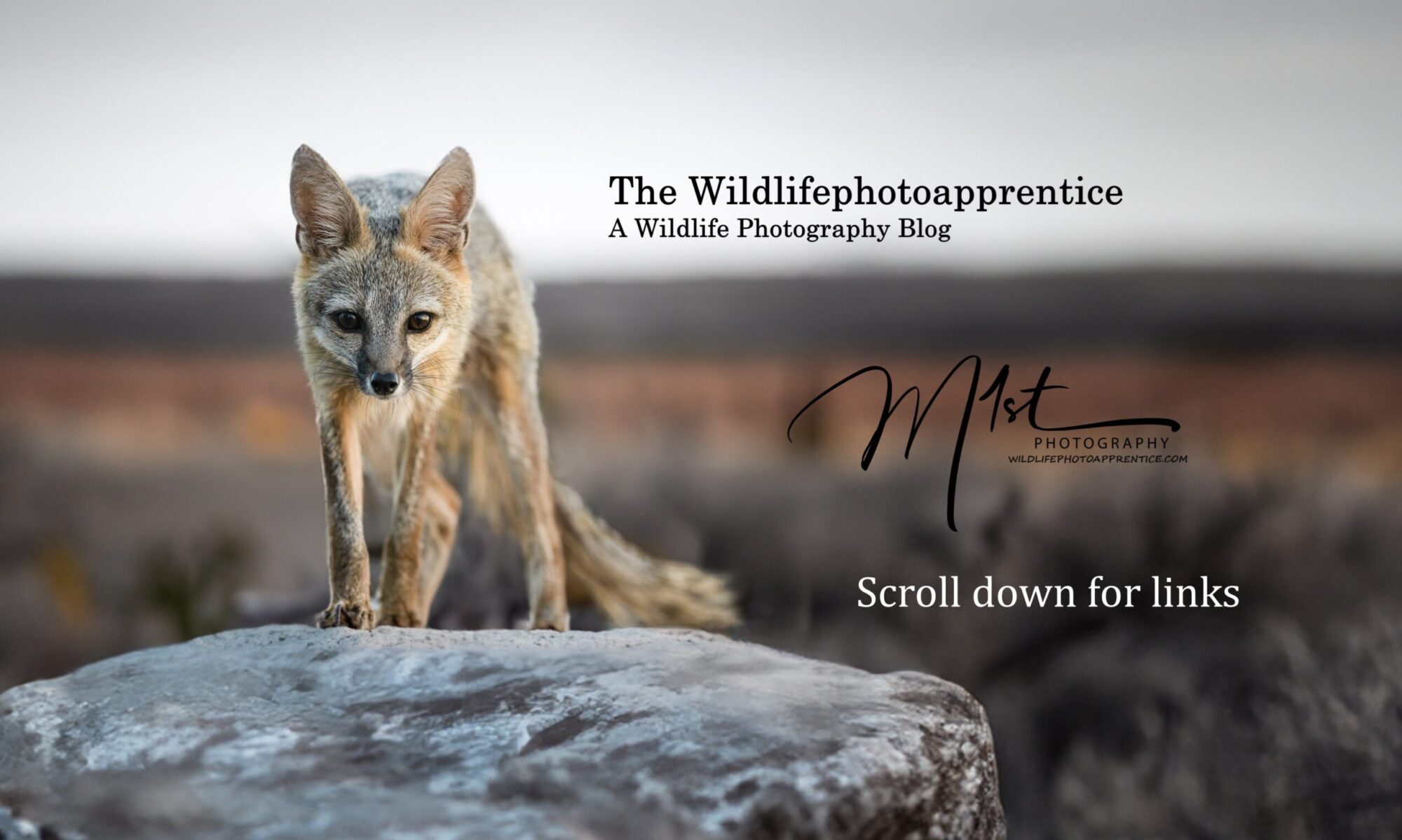Hummingbirds, with their vibrant colors and astonishing flight abilities, have always fascinated nature enthusiasts and photographers alike. These tiny marvels, known for their rapid wingbeats and ability to hover in mid-air, present a unique and exciting challenge for photographers. In West Texas and Northern New Mexico, where I photograph hummingbirds to most, a variety of hummingbird species enchant observers with their vibrant colors and agile flights. Among the most common species in the region are the Black-chinned Hummingbird, known for its iridescent purple throat patch on males; the Broad-tailed Hummingbird, recognized for its metallic green back and whirring wing sounds; and the Rufous Hummingbird, distinguished by its fiery orange-red plumage and remarkable migratory journeys. Hummingbirds are frequent visitors to gardens and feeders, where they dart gracefully from flower to flower, contributing to the rich tapestry of biodiversity in the high desert landscapes of the American Southwest. In this blog, we will explore the art of photographing hummingbirds and discover techniques to capture their exquisite beauty.
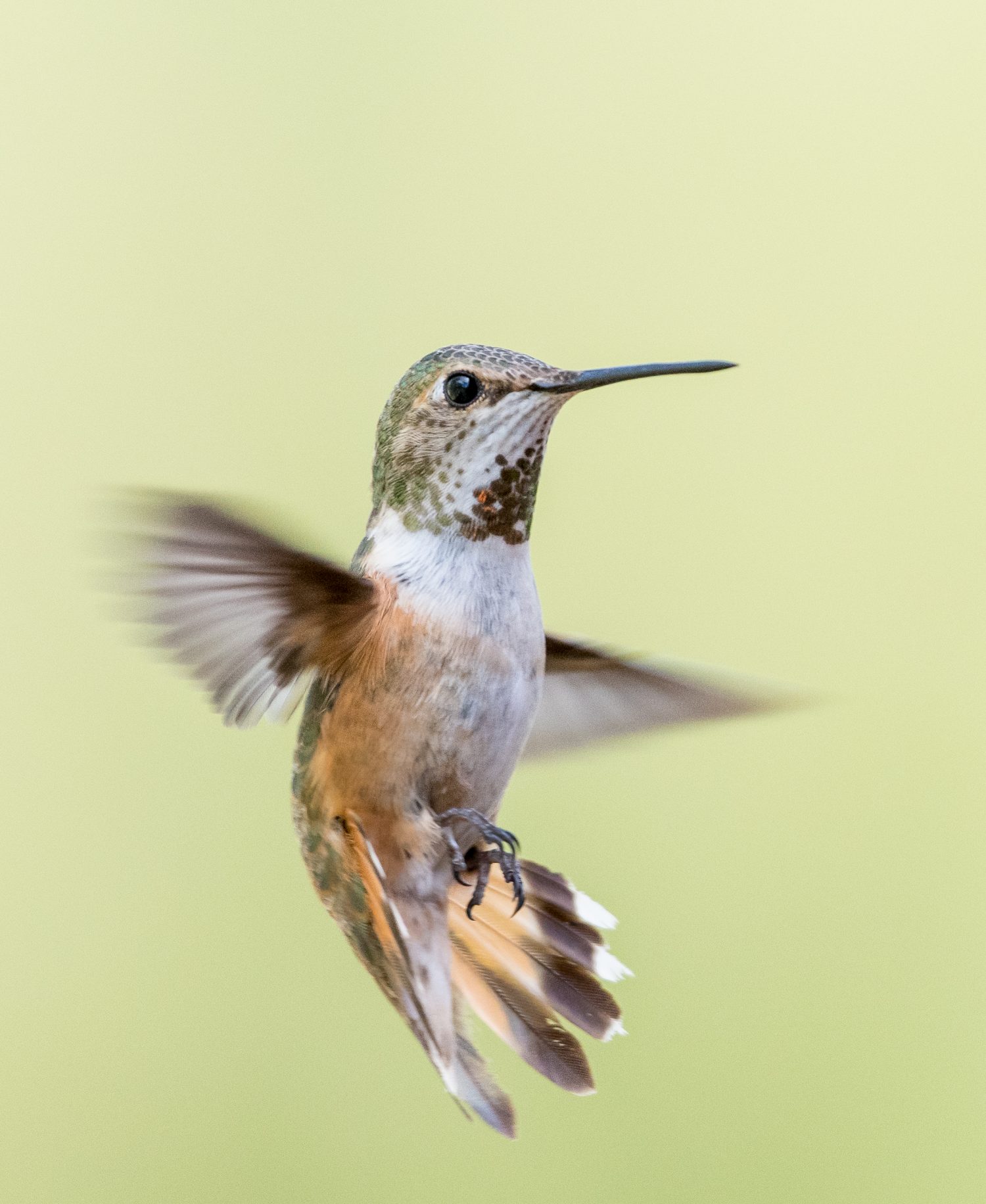
Before setting out to photograph hummingbirds, it is essential to research their behavior, preferred habitats, and migration patterns. Learn about the specific species you wish to capture and find locations where they are known to frequent. Hummingbirds are typically found in regions with abundant flowers and nectar sources. Botanical gardens, nature reserves, and areas with a diverse range of flowering plants are great places to start.
Hummingbirds have a specialized diet primarily consisting of nectar, a sugary liquid found in flowers. Their long, slender bills and extendable, tube-like tongues are perfectly adapted for sipping nectar from deep within flowers. As they hover in front of blossoms, their rapid wing beats allow them to maintain position while they delicately probe the flower with their bills. The nectar serves as their main source of energy, providing the high levels of sugars they need to fuel their incredibly fast metabolism. Hummingbirds are known to visit a wide variety of flowers, each with their own unique shape and nectar composition, allowing these tiny birds to exploit diverse resources throughout their habitats.
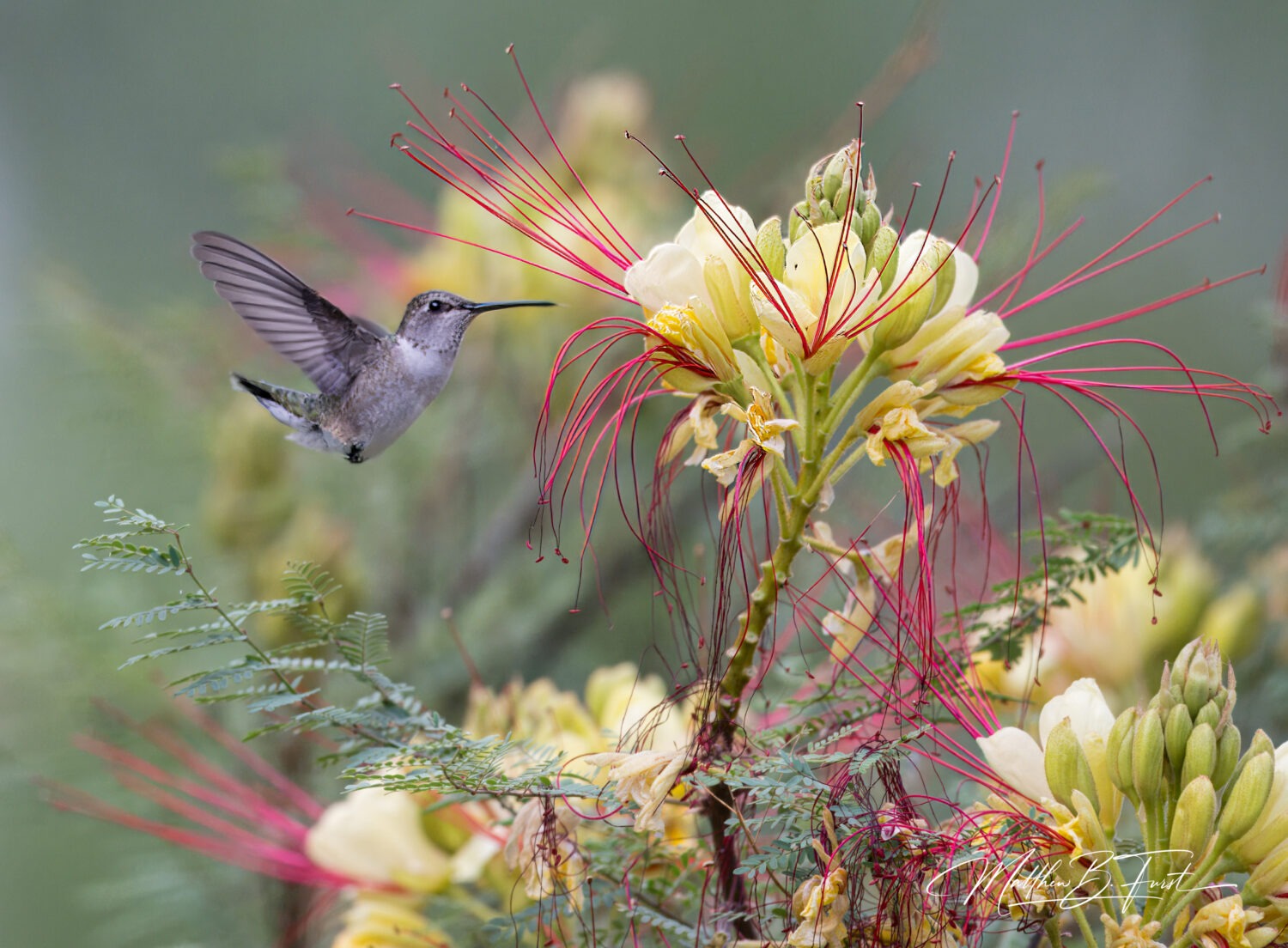
Despite their reliance on nectar, these birds are not strictly herbivorous and have a carnivorous side as well. In addition to nectar, hummingbirds supplement their diet with small insects and spiders. Insects provide essential protein, fats, and other nutrients that are lacking in their nectar-based diet. Hummingbirds are adept hunters, capable of catching insects mid-flight or plucking them from leaves and branches. They use their agility and sharp bills to snatch prey with impressive precision, incorporating this vital protein source into their diet, especially during breeding season when the demands for energy are heightened.
Hummingbirds are known for their remarkable nesting habits, often constructing intricately woven nests in sheltered locations. These nests are typically built using plant fibers, spider silk, and other soft materials, often camouflaged with bits of lichen or moss to blend seamlessly with their surroundings. Hummingbird nests are remarkably small, often no larger than a half-dollar coin, yet they are sturdy and well-crafted. Female hummingbirds meticulously build these nests, using their bills and feet to weave together fine materials into a cup-shaped structure. Nests are typically situated on horizontal branches or in the fork of a tree, offering protection from predators and the elements. Hummingbirds exhibit remarkable site fidelity, often returning to the same nesting site year after year, reinforcing and refurbishing their nests as needed. Once the nest is complete, the female lays her eggs, typically two, which she incubates alone until they hatch, after which she cares for the chicks until they fledge.
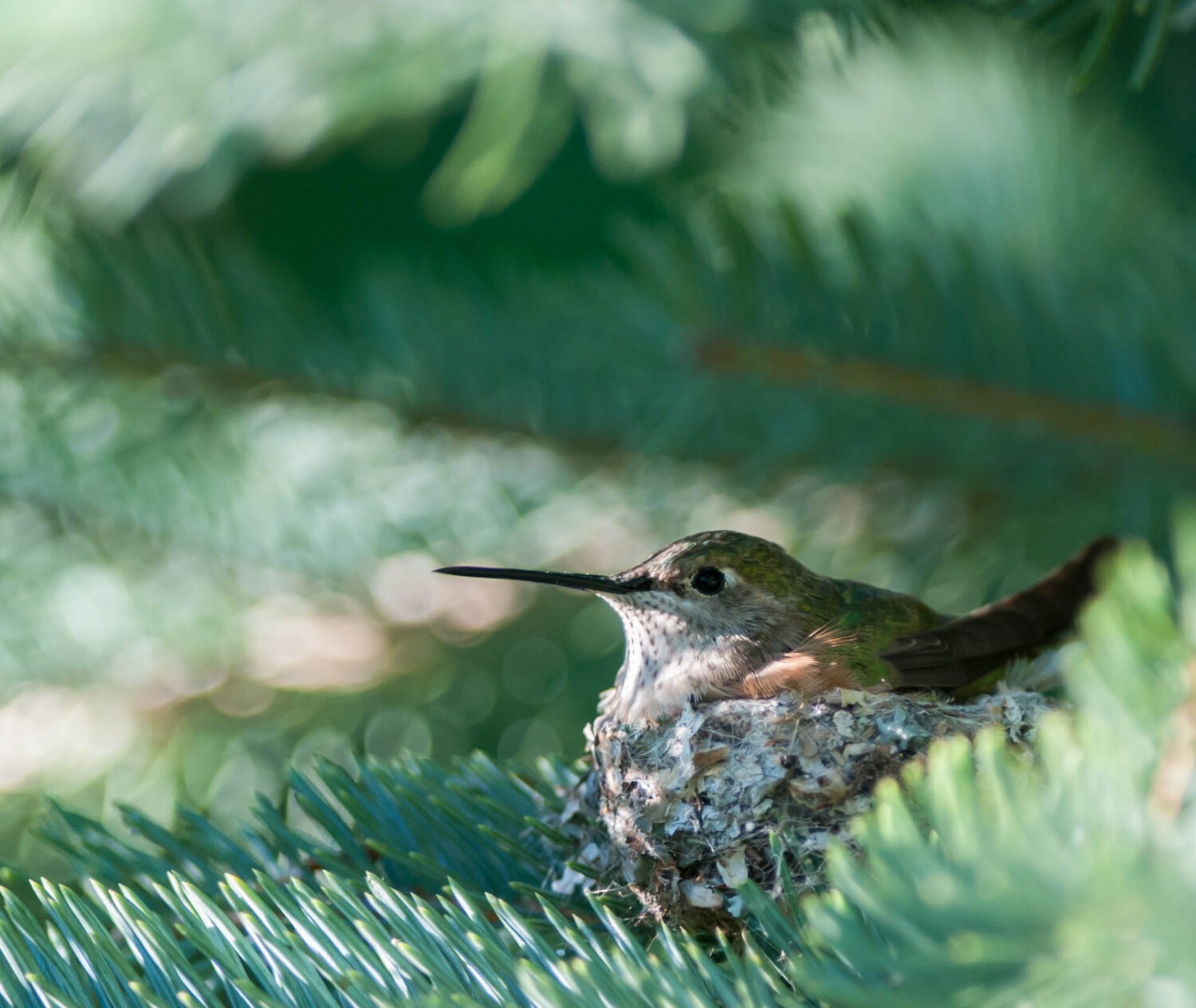
Hummingbirds migrate and may not be present in certain areas year round particularly in winter. Hummingbird migration is a remarkable natural phenomenon that showcases the incredible endurance and navigational abilities of these tiny birds. Hummingbirds undertake long-distance journeys, often spanning thousands of miles, to reach their breeding grounds or find food sources in different seasons. Their migrations are driven by factors such as changes in food availability and climate. These incredible creatures rely on their remarkable memory and ability to navigate using landmarks, the position of the sun, and even the Earth’s magnetic field. Some species, like the Rufous Hummingbird, embark on epic migrations from their wintering grounds in Mexico and Central America all the way to their breeding grounds in North America, crossing vast landscapes and encountering various challenges along the way. Hummingbird migration is a testament to the resilience and adaptability of these small birds and provides a captivating spectacle for nature lovers and bird enthusiasts around the world.
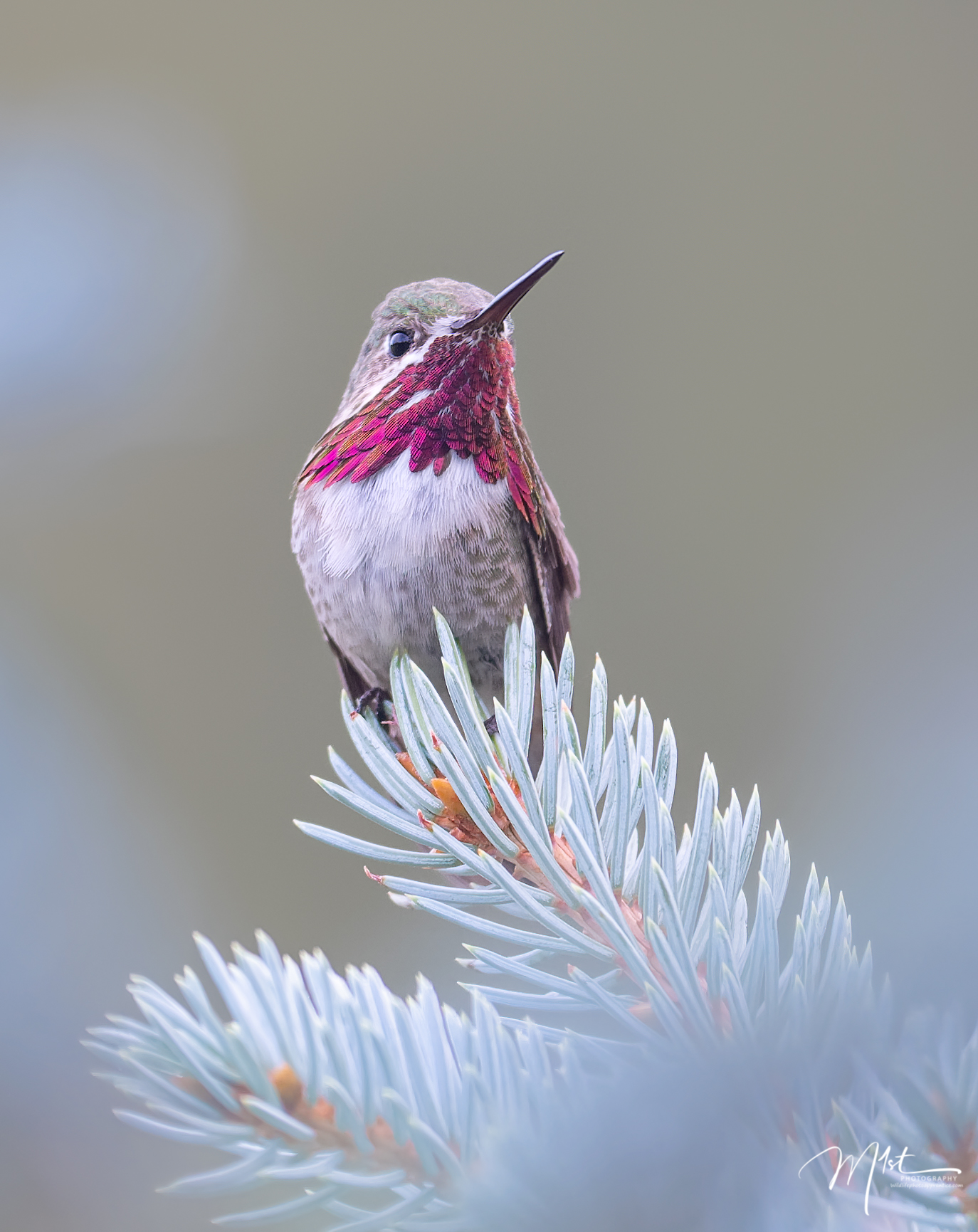
To photograph hummingbirds successfully, you’ll need the right equipment. Consider investing in the following. A DSLR or mirrorless camera with manual controls will allow you to adjust settings to capture fast-moving subjects. A high burst rate (frames per second) is advantageous for capturing hummingbirds in flight. A telephoto lens with a focal length between 300mm and 600mm will enable you to get close-up shots while maintaining a safe distance from the birds. A lens with a wide aperture (f/2.8 or wider) will help create a pleasing bokeh effect. Use a sturdy tripod to keep your camera stable and reduce motion blur. Look for lightweight and adjustable tripods for ease of use in different shooting conditions. Consider using a remote shutter release or cable release to avoid camera shake. Additionally, a polarizing filter can help reduce glare and enhance colors.
When photographing hummingbirds, aim for eye-catching compositions that highlight their unique features. Position yourself at their favorite feeding spots and select a pleasing background that contrasts well with their vibrant plumage. Experiment with different angles and perspectives to capture their agile flight or perching behavior.
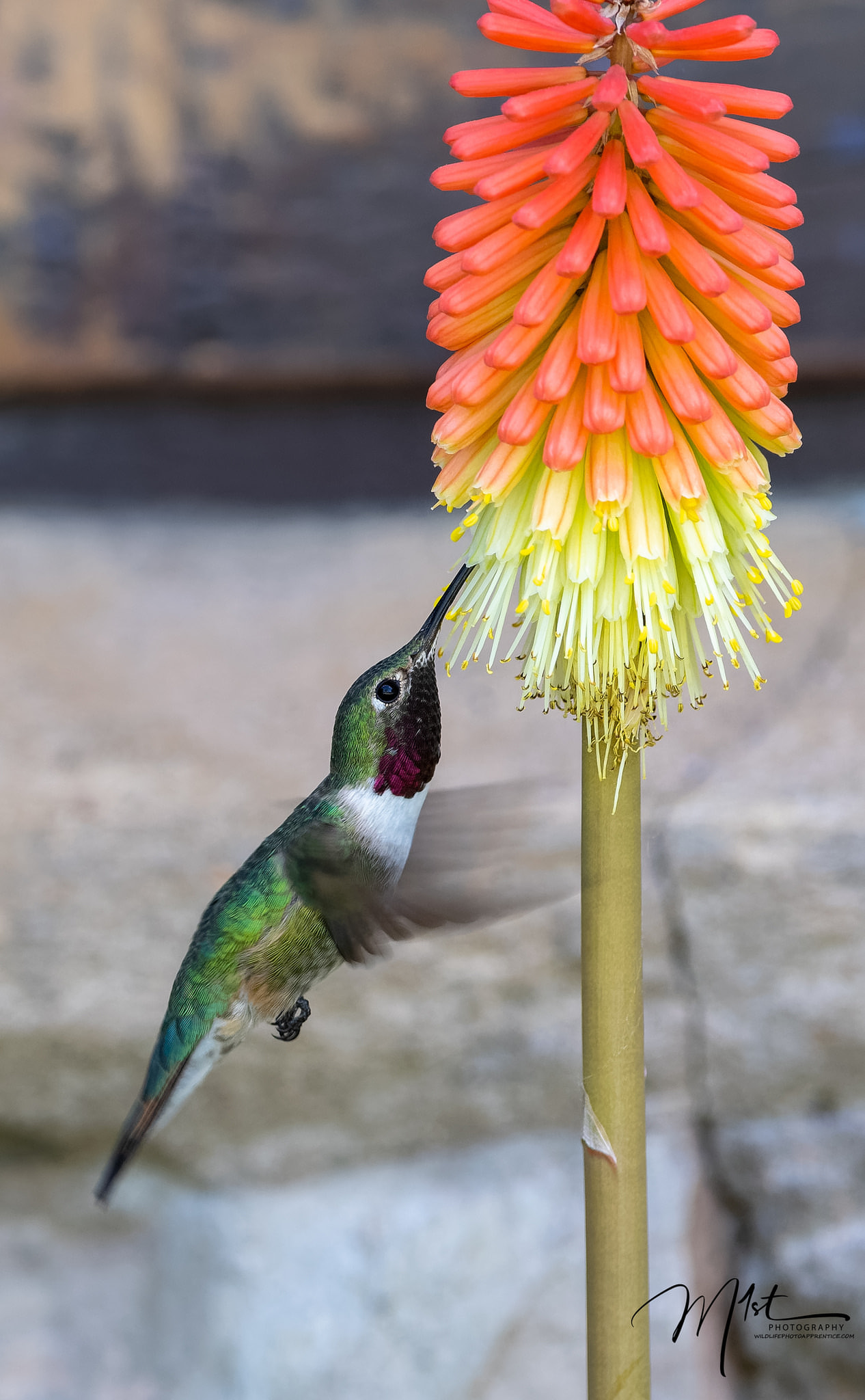
Lighting plays a crucial role in photography, and hummingbirds are no exception. Early morning or late afternoon light tends to be softer, creating a warm and inviting atmosphere. Avoid harsh midday sunlight, as it can create unflattering shadows. Utilize diffusers or natural shade to soften the light and achieve a more even exposure.
Mastering the right camera settings is vital to freeze the fast-paced movement of hummingbirds. Start with the following settings as a baseline. Set a high shutter speed (1/1000s or faster) to freeze the motion of the hummingbirds’ wings. A faster shutter speed may be necessary for capturing their high-speed maneuvers. Use a wide aperture (low f-stop number) to create a shallow depth of field, isolating the bird from the background and enhancing the bokeh effect. Aim for an aperture between f/2.8 and f/5.6, depending on the desired depth of field. Keep your ISO as low as possible to maintain image quality and minimize noise. Start with ISO 200 and increase it if necessary to achieve a properly exposed image in low light conditions. Select continuous autofocus (AF-C) mode to track the hummingbirds’ movement and keep them sharp. Use a single focus point or zone focusing to ensure accurate focus on the bird’s eye.
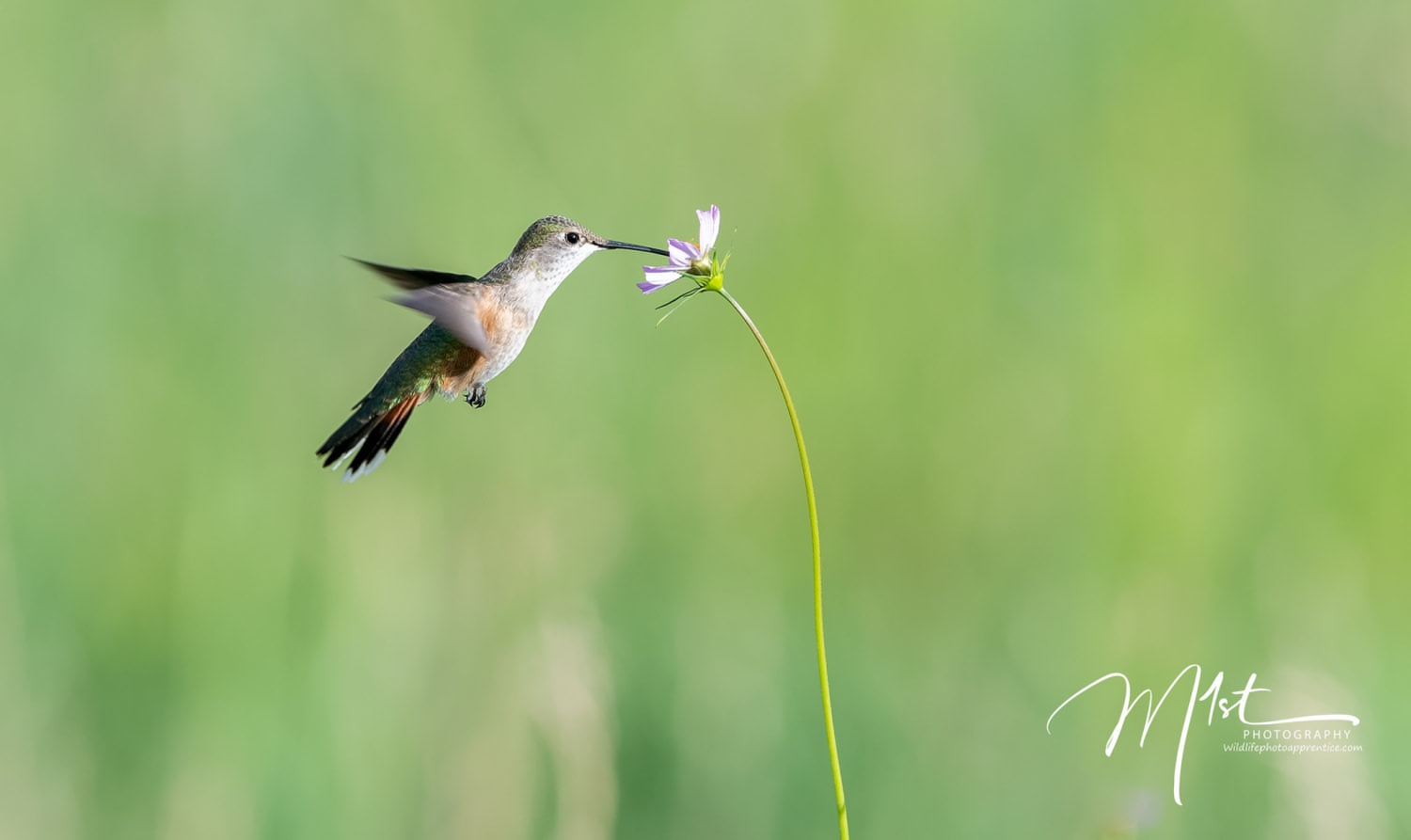
Photographing hummingbirds requires patience and persistence. Set up your equipment, find a comfortable spot, and wait for the birds to come to you. It may take some time for them to get accustomed to your presence, but with patience, they will eventually come within your camera’s range. Take this opportunity to observe their behavior and anticipate their movements.
While photographing hummingbirds, it is essential to prioritize their well-being and conservation. Avoid disrupting their natural behavior or habitats. Use long lenses to maintain a safe distance, and do not disturb nests or breeding areas. If using feeders to attract hummingbirds, ensure they are clean and contain an appropriate sugar-water solution (one part sugar to four parts water). Refrain from using artificial colors or sweeteners. Setting up water features is also an excellent strategy to attract and photograph hummingbirds in a captivating and natural setting. Hummingbirds have a strong affinity for water, and incorporating it into your photography setup can yield stunning results. Consider installing a shallow birdbath or a small fountain with gently flowing water. Place it near flowering plants and in a quiet, secluded area to create a peaceful environment that hummingbirds will find appealing. Adding rocks or branches to the water feature can provide perching spots for the birds. Additionally, consider incorporating colorful flowers or potted plants nearby to further attract hummingbirds. Ensure that the water is clean and fresh, and change it regularly to maintain hygiene. By setting up water features, you create an inviting oasis for hummingbirds, increasing your chances of capturing breathtaking images of these captivating creatures in their natural element.
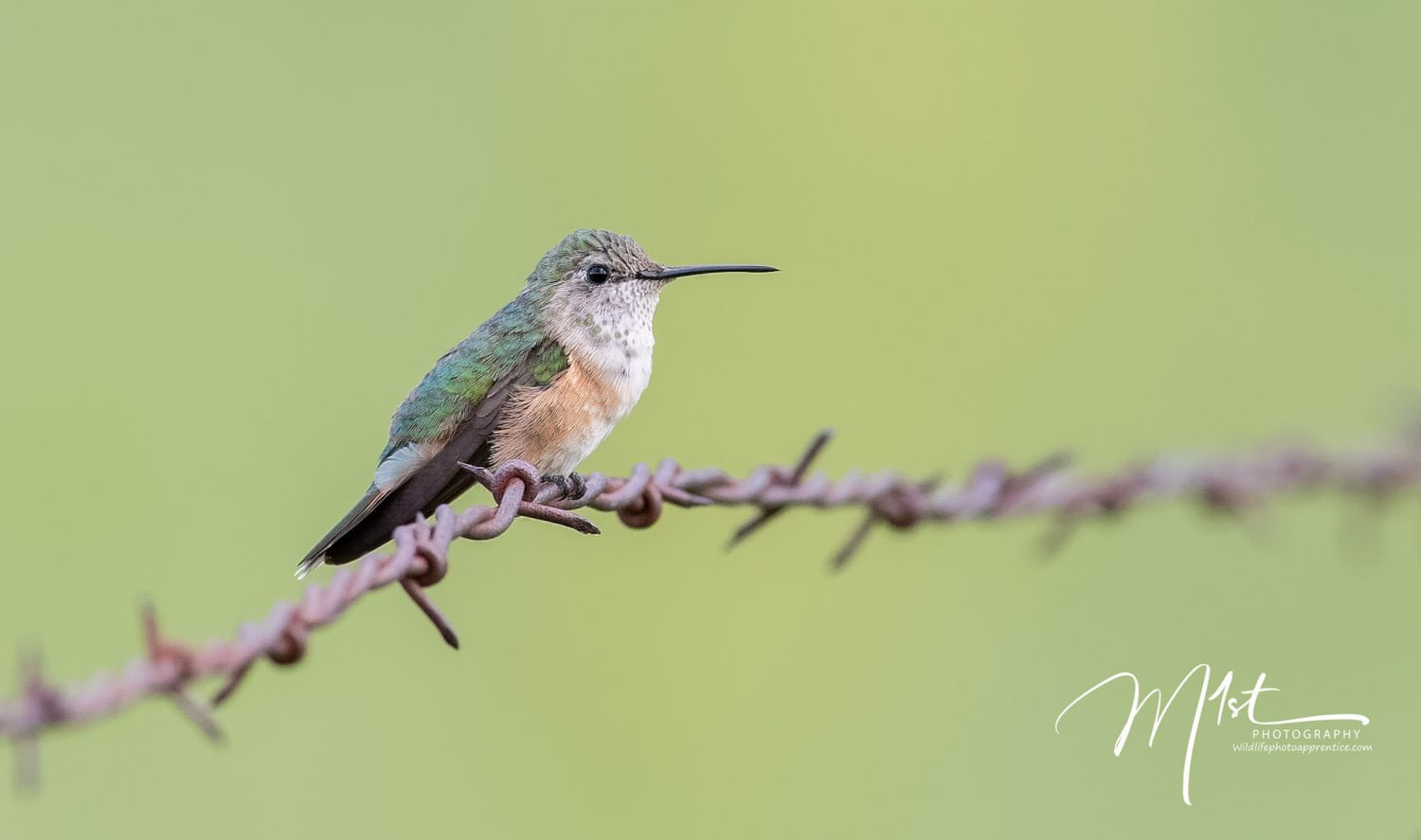
In conclusion, photographing hummingbirds is a captivating and rewarding pursuit that allows us to witness the beauty and grace of these remarkable creatures. With the right equipment, knowledge, and patience, you can capture mesmerizing images that showcase their vibrant colors, unique behaviors, and incredible flight capabilities. By immersing ourselves in their world and understanding their habits, we gain a deeper appreciation for the wonders of nature. So, grab your camera, venture into hummingbird habitats, and embark on a journey of discovery and creativity. Whether you’re capturing their intricate flight patterns, delicate perching moments, or sipping nectar from vibrant flowers, photographing hummingbirds offers an opportunity to freeze fleeting moments of natural splendor and share them with the world. Let your lens tell the story of these tiny marvels and inspire others to appreciate and protect the delicate ecosystems they call home. Happy hummingbird photography!
